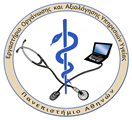Symptoms
|
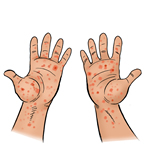 1. Rash (face, neck, upper extremities, trunk, lower extremities) 1. Rash (face, neck, upper extremities, trunk, lower extremities)
|
|
|
|
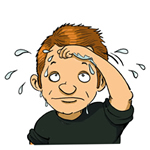 2. Fever 2. Fever
|
|
|
|
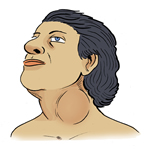 3. Pain and swollen lymph nodes (usually behind the ears) 3. Pain and swollen lymph nodes (usually behind the ears)
|
|
|
|
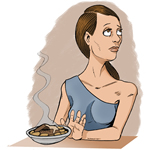 4. Loss of appetite 4. Loss of appetite
|
|
|
|
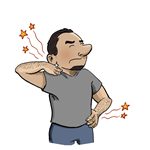 5. Joint pain and inflammation 5. Joint pain and inflammation
|
Rubella occurs usually in late winter and early spring.
How is rubella spread
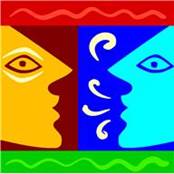
Rubella is transmitted from person to person by direct contact with an infected person's respiratory secretions, or through droplets.
Treatment
For the treatment of rubella seek medical advice. A special treatment for rubella does not exist.
Preventing rubella
-
The best way to avoid catching rubella is to be immunized with the vaccine against rubella.
-
Children and adults should stay off school or work for 7 days after they develop the rash.
-
Avoid contact with pregnant women!
When to seek medical advice
Talk to your doctor if you develop any of the above mentioned symptoms.
Vaccines
Vaccines for the prevention of rubella include the vaccine against measles-mumps and rubella (MMR) and the vaccine against measles-rubella-mumps-varicella (MMRV). The vaccine is administered in two doses at the ages of 12-15 months and 4-6 years.
References
keelpno
nhs
















